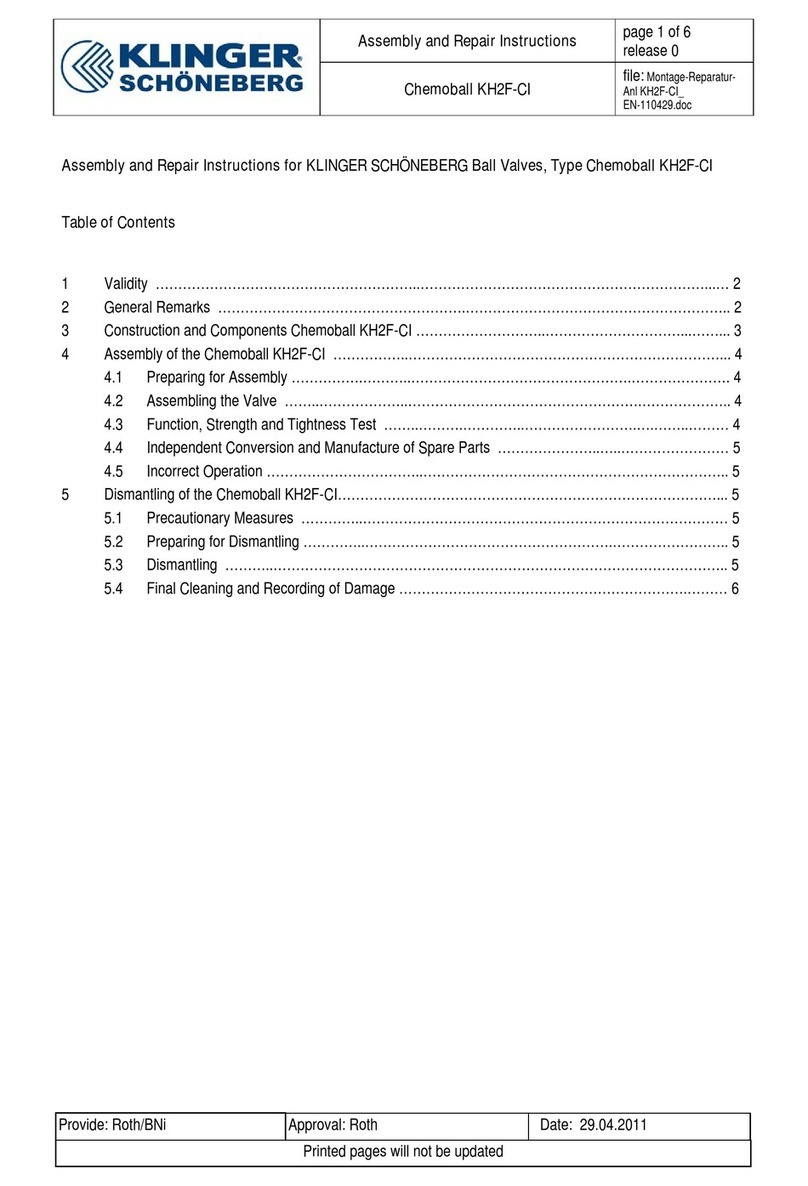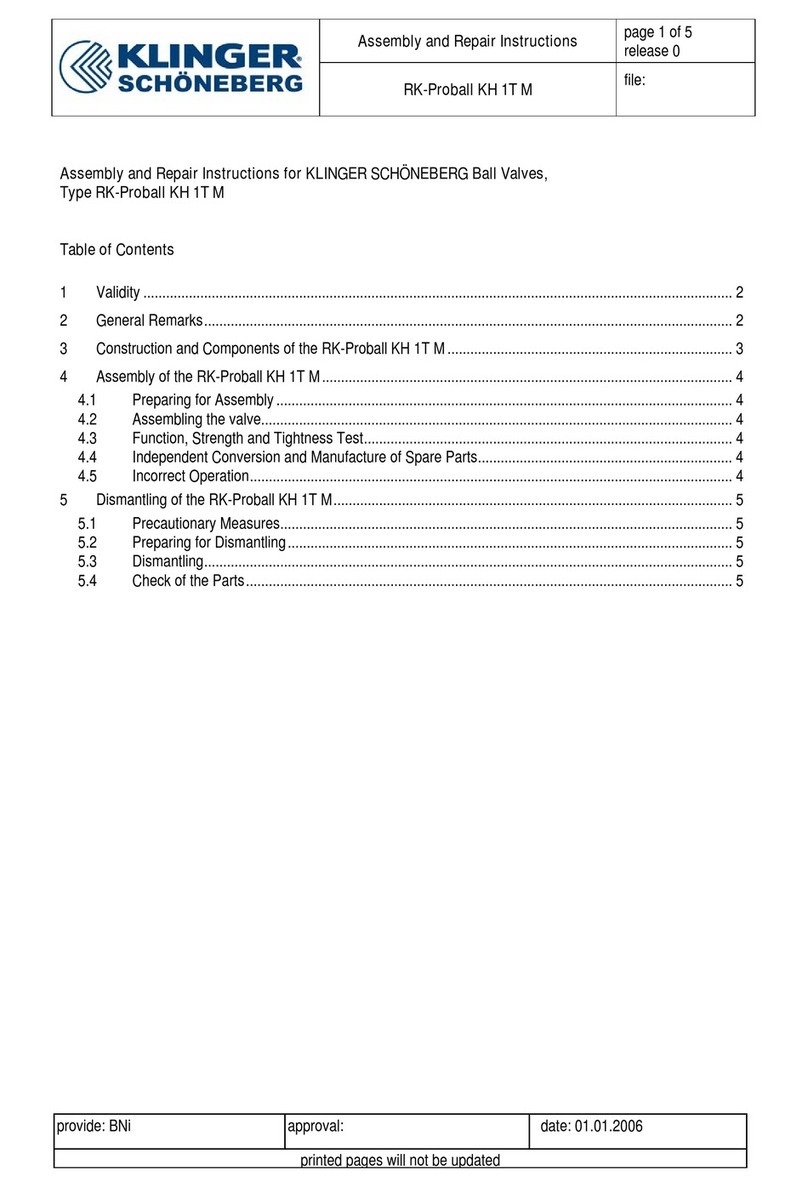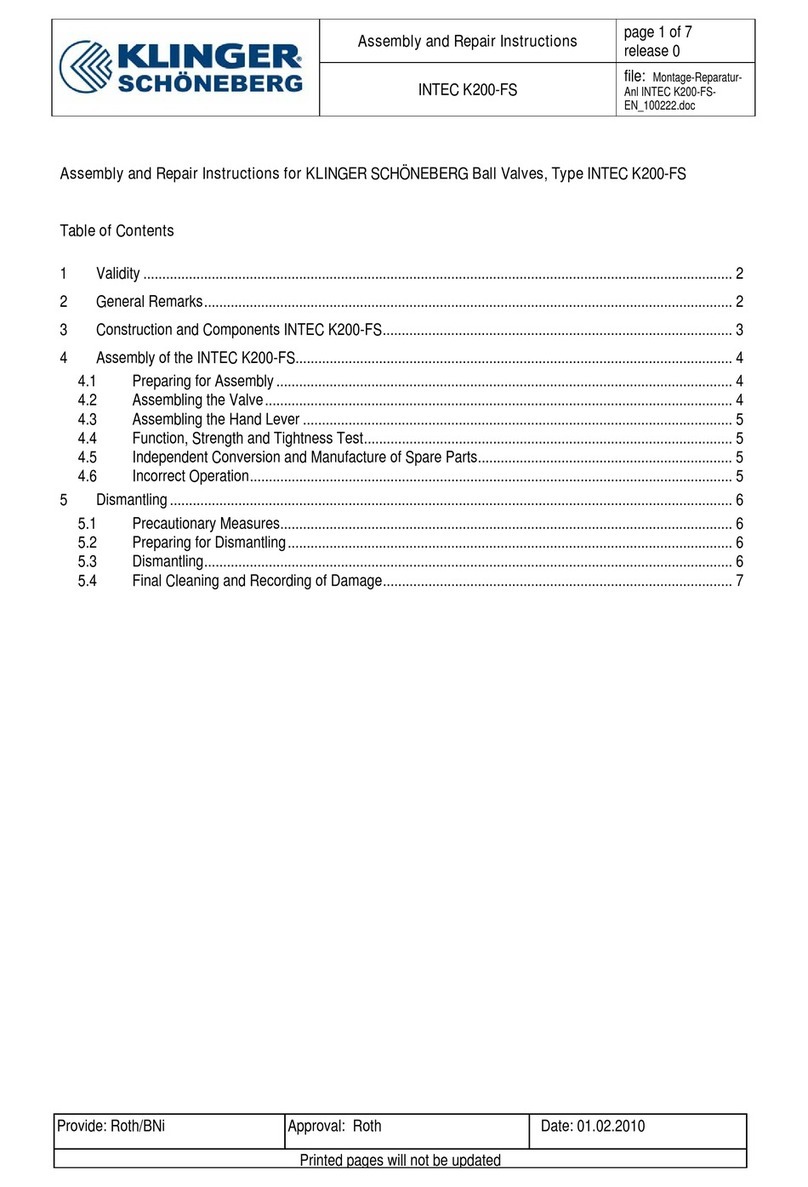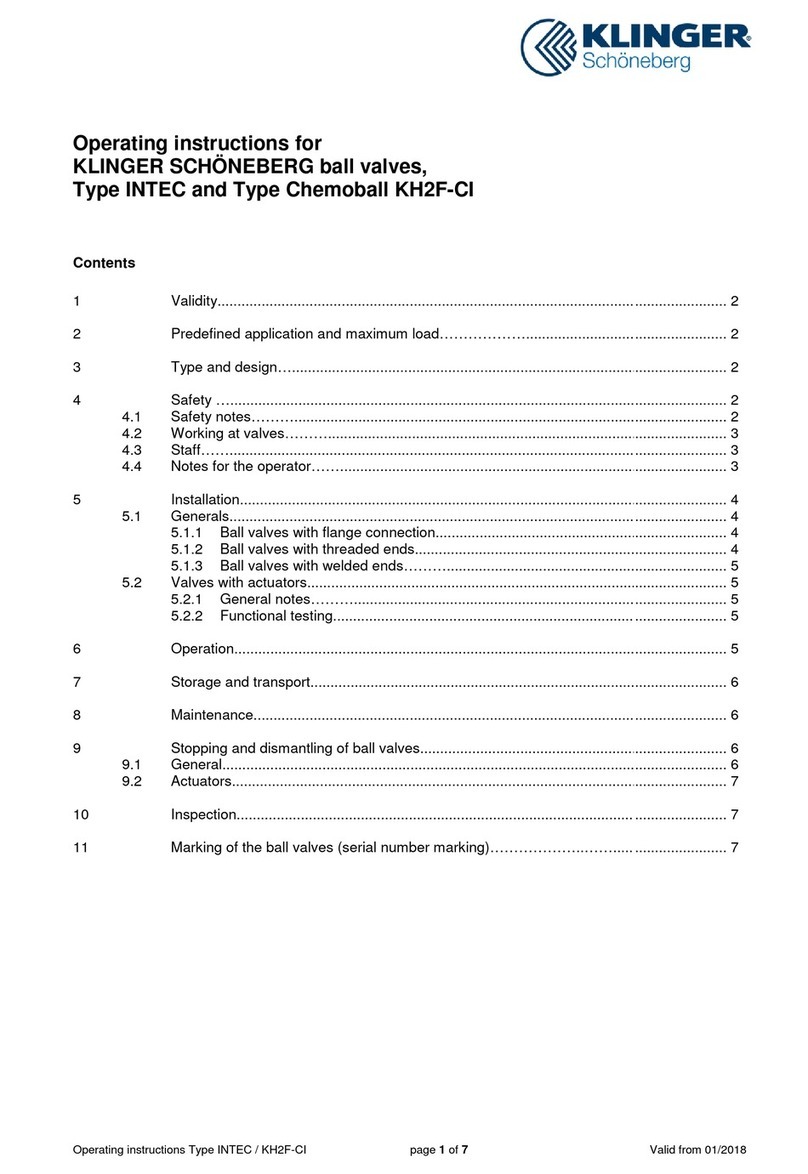
Operating instruction ball valves
RK-Chemoball, RK-Proball, RK-Ecoball page 6 of 7 Valid from 12 2013
The ball valve is opened and
closed by turning the hand lever or the control shaft through 90°. The
valve closes when turned to the right (clockwise). The ball valve is opened when the hand lever is
positioned parallel to the pipe. If the hand lever is removed the position is indicated by the dihedron
(valve open when dihedron is parallel to the pipe). Ball valves are not suitable for regulating the flow.
The hand lever should be operated slowly.
If a medium with extremely high expansion through temperature change is used pressur
relief must be provided. For this please follow the relevant operating instructions. If pressure
is relieved by drilling a hole the ball valve can be operated only in one direction of flow.
If the ball valve is used for a purpose other than that for
which it was intended, e.g. continuous use in
the throttling position, this will cause increased wear. If the hand lever is used improperly, for example
by using a lever extension, or if it is used as a climbing aid, correct functioning will be impaired. If the
valve is not operated for a long period the actuating moment may have to be increased. To remedy
this we recommend regular functional checks. If the surface is damaged through impact or friction this
can cause corrosion, and can therefore lead to a reduction in the service life.
Ball valves should be stored in a dry place, protected from contamination. When loading and unloading,
as well as during transport of the valves, care should be taken that the ball valves are not thrown or
knocked, in order to avoid damage. Covers which may have fallen off should be cleaned and replaced.
The ball valves have been protected against corrosion before leaving the works.
The ball valves must be stored in the opened position. The
plastic caps should not be
removed. The ball valves should be protected against environmental influences, such as
moisture, wetness, rain, dust, dirt, sand, mud, salty air or drizzle and salt water.
During storage temperatures should not drop below or exc
changes in temperature should be avoided as far as possible (development of condensation water).
Lubrication is recommended following long storage (caution
not with the oxygen model). The ball
valves should subsequently be opened and closed at least twice.
acting actuators (e.g. pneumatic actuators with spring closed or similar system),
in which the “closed” position is required as final position in a pressureless state of the control circuit,
it is permissible to supply the valve in the closed position. If necessary the valve should be cleaned
before installation.
Specially actuated valves with mounted solenoid valves and limit switches must be treated
extremely carefully. The packing should be removed preferably shortly before installing. Do
not knock heavy valves on hand levers or mounted components.
ball valves are maintenance
free. Correct functioning and
sealing should be checked at regular intervals. If maintenance is required please observe the following
points:
Maintenance work should be carried out only by trained specialists. If maintenance is carried
out while the valves are in operation, there must be no residual pressure in the line and in the
ball valve. The ball valve should be opened and closed at least once in order to ensure that the
dead volume is also no longer under pressure.































